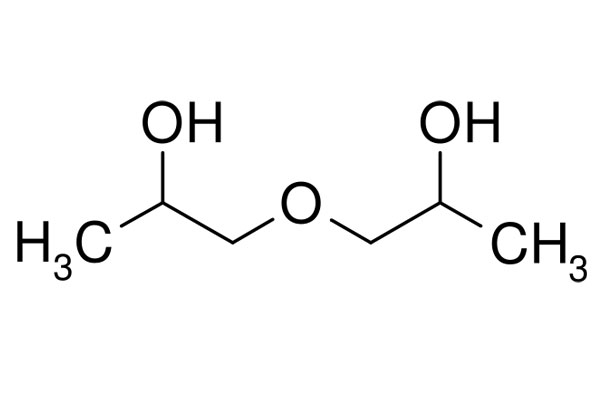Cas No: 25265-71-8
EINESC No: 246-770-3
Molecular weight: 134.173 g/mol
Chemical Formula: C6H14O3
Chemical Structure:
Physical Properties
General Properties: colorless liquid
Odor: odorless
Intensity: 1,0206 gr/L
Boiling point: 230,5 °C
Melting point: -40 °C
Flash point: 138°C
Vapor pressure: 0.01 mmHg 20 °C
Refraction index: 1,4440 nD
Solubility (aqueous) completely miscible
Viscosity:

General Properties
Dipropylene glycol is a clear, colorless and lightly viscose liquid and it is a mixture of isomeric 1,2- dipropylene glycol ethers. Short term for it is DPG. It is less humectant than diper glycols. It can easily be mixed with both water and organic solvents such as ethanol, benzene and toluen. DPG has low toxicity and low volatilty thus, it is a very commonly used chemical. As it is a dihydroxy alcohol, it shares the same characteristics as them.
Production
Dipropyleneglycol is generally produced as a byproduct during production of propylene glycol via propylene hydrolysis.
Applications
40% of the produced dipropyleneglycol is used as a component in high volume plastcizer production. It is also a starter in poliols and a reactor for unsaturated polyurethane resins for granting them flexibility and stability. It is also used as a solvent for brake fluids, pesticides, nitrocellulose, cellulose acetate and lake. Due to its low toxicity, it is preferred in soap and parfume productions. It is a commonly used component for smoke machine fluid.
Safety Measures and Toxicity
Dipropyleneglycol’s toxicity level is low. If it contacts with skin, it may cause dryness and irritation. It must be heated before burnt.